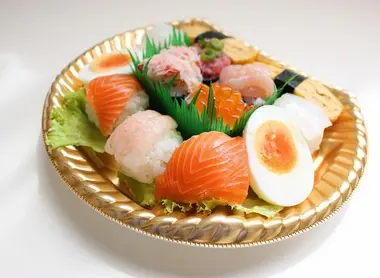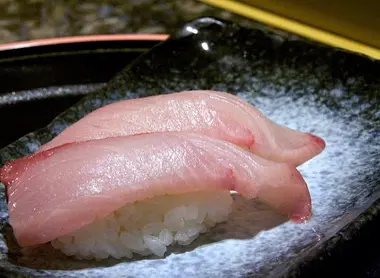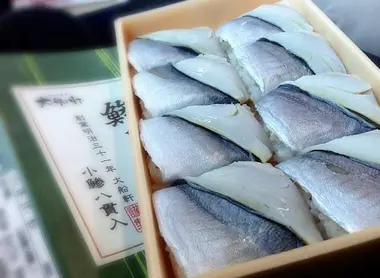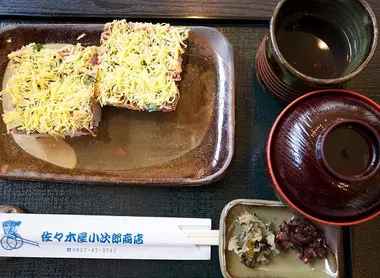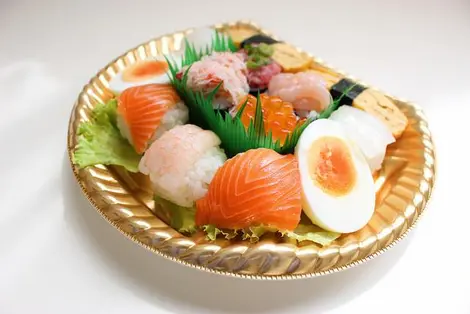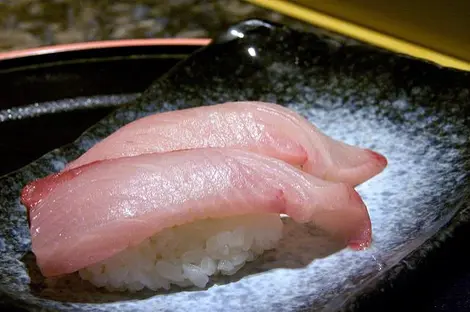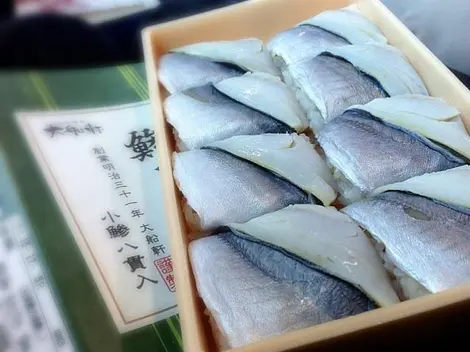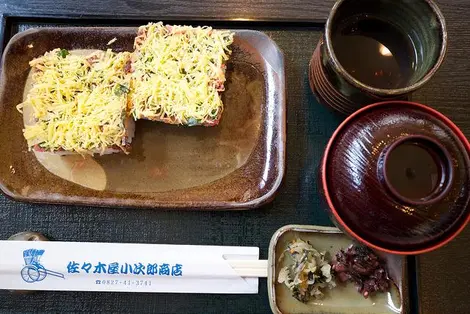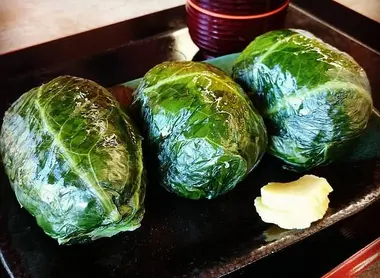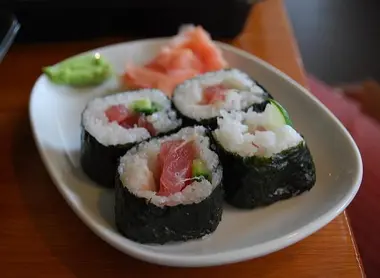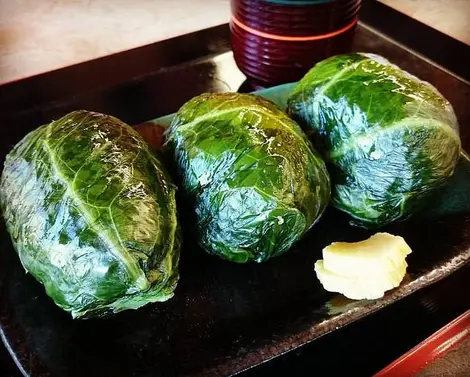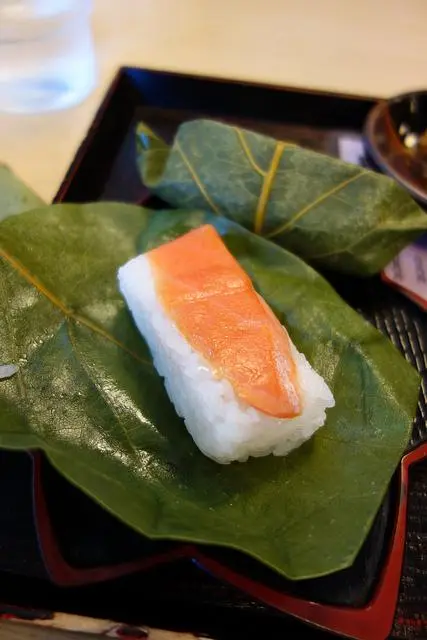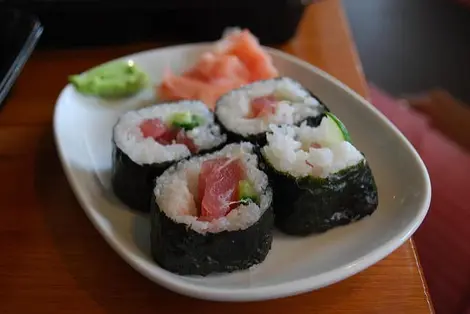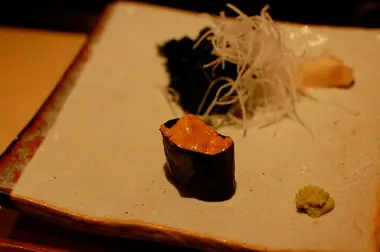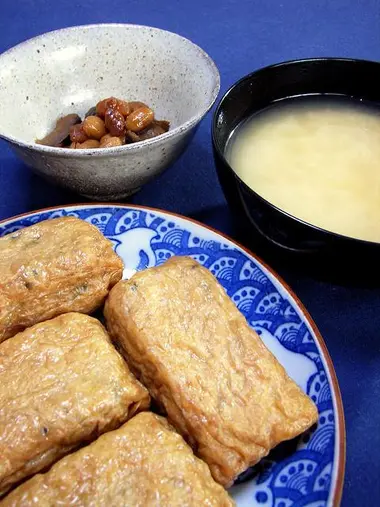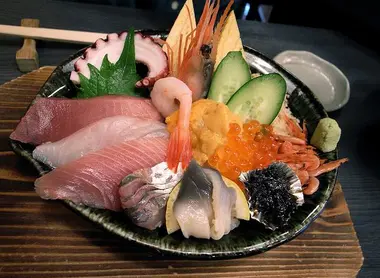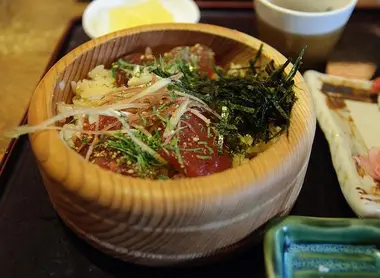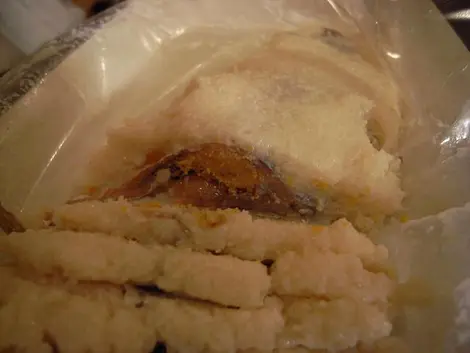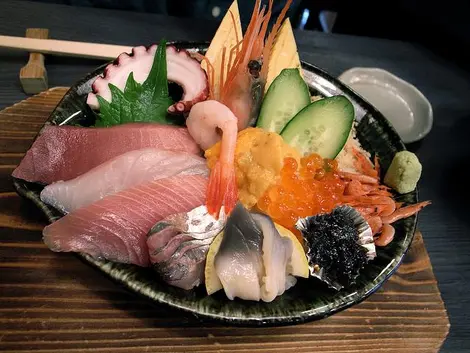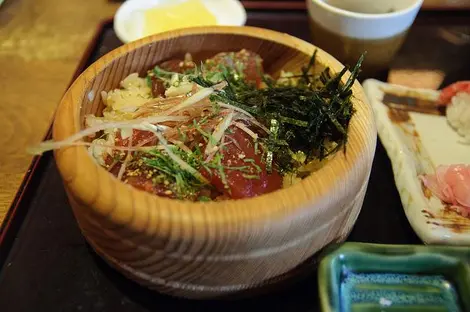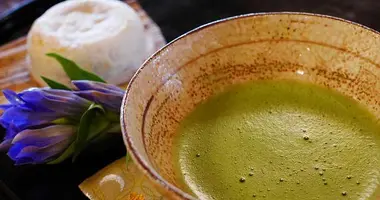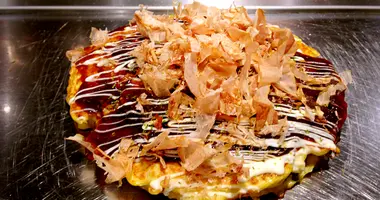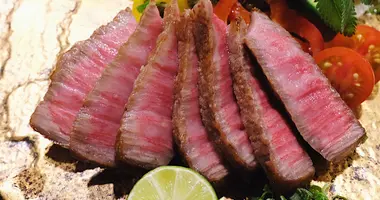The different types of sushi
- Published on : 31/05/2019
- by : F.F.Y.
- Youtube
More than maki
Sushi, the emblem of Japanese gastronomy, is much more than the simple combination of raw fish and rice that many people imagine. Born as a method of preserving fish, it has evolved over the centuries to become a refined culinary art appreciated the world over. With so many variations to choose from, it's essential to understand the differences between each type of sushi, their characteristics, ingredients and origins. From traditional nigiri to contemporary innovations, each style has its own history and particularities. Let's take a look at the main categories of sushi you may encounter, from the most traditional to modern creations.
The origins and history of sushi
The history of sushi goes back many centuries, with its origins in Asia. Contrary to popular belief, sushi did not originate in Japan, but in China in the 2nd century BC. Back then, it was a preservation method called narezushi, in which fish was placed between layers of fermented rice. The lactic acid produced by this fermentation preserved the fish for several months. Curiously, the rice was not eaten at the time, but discarded once the fish had been recovered.
In the 7th century, this technique was exported to Japan, while it gradually disappeared in China. The Japanese improved the method and began to consume rice as well around this time, putting an end to wastage. In the 15th century, the inhabitants of Edo (Tokyo's former name) came up with the idea of adding rice vinegar to accelerate the fermentation process.
The real revolution came in 1824, when Hanaya Yohei, a traveling salesman from Edo, invented the sushi we know today. He created a fast-food dish, shaping by hand pieces of simply vinegared rice, topped with fresh fish. This sushi, which no longer required fermentation, was a runaway success throughout Japan. After the Second World War, sushi restaurants began to spring up, gradually replacing street stalls.
The word "sushi" itself comes from the Japanese terms "su" (vinegar) and "shi" (rice), referring to the vinegared rice that forms the basis of this preparation. Today, sushi is world-famous for its ability to adapt to local tastes while retaining its essence.
Traditional sushi: nigiri, maki and chirashi
Among traditional sushi, nigiri-sushi is undoubtedly the most emblematic. It's a small ball of hand-pressed vinegared rice on which a thin slice of raw fish is placed. Nigiri takes its name from the Japanese verb "nigiru", meaning "to press". This type of sushi requires great dexterity: the chef has to form a slab of rice weighing around 20 grams, pressing it lightly between his fingers to give it its characteristic shape. The preparation of the rice is crucial, and seasoning with rice vinegar, sugar and salt must be perfectly mastered.
Another classic of Japanese cuisine is maki-sushi, commonly known simply as "maki". Literally "sushi in a roll", it is prepared by rolling vinegared rice and various ingredients in a sheet of dried nori seaweed. Preparation is carried out using a makisu, a bamboo mat which is used to shape the sushi into a perfect cylinder. Once the roll has been formed, it is cut into six or eight equal pieces. Maki sushi can contain a wide variety of ingredients, from raw fish to vegetables, offering endless combination possibilities.
Chirashi-zushi, literally "scattered sushi", takes a different approach. In a bowl or on a platter, a layer of vinegared rice is laid out, on top of which slices of raw fish and vegetables are carefully arranged. This colorful dish is particularly popular at parties and banquets in Japan. There are several regional variations, such as the elaborate bara-zushi fromOkayama, or the tekone-zushi from the Mie region, specifically prepared with red-fleshed fish such as tuna.
These three types of sushi form the basis of traditional Japanese cuisine, and have survived the centuries by preserving their ancestral preparation methods. Despite the modernization of techniques and the emergence of new varieties, they remain essential references for all fans of Japanese cuisine.
Popular maki variants: futomaki, hosomaki and temaki
The world of maki is rich in variations, each with its own distinctive characteristics. Among the most popular, futomaki stands out for its imposing size. Its name literally means "big roll" and it generally measures between 5 and 6 centimetres in diameter, unlike classic maki, which is around 3 to 4 centimetres. This more generous version contains several ingredients that create a beautiful assortment of flavors and textures. Futomaki is particularly popular at celebrations and festivities in Japan, where its colorful presentation and imposing appearance make it a dish of choice for special occasions.
In contrast, hosomaki is a thin, delicate maki, usually containing just one ingredient, such as cucumber (kappa-maki) or tuna (tekka-maki). With a diameter of around 2 to 3 centimeters, it's considered the minimalist version of maki. Its simplicity emphasizes the quality of the main ingredient and the perfection of the rice. For beginners wishing to learn how to cook good sushi, hosomaki is often recommended as a first step, as its rolling technique is more accessible.
Temaki, on the other hand, takes a totally different form. Rather than being cut into slices, this "hand sushi" takes the form of a cone of nori seaweed, filled with rice and various ingredients. Larger than other makis, temaki is traditionally eaten by hand, hence its name. It is particularly appreciated for its conviviality and practicality. In Japanese homes, it's not uncommon to organize "temaki parties", where everyone composes their own cone according to their preferences.
These variations on maki are a perfect illustration of the diversity and creativity of Japanese cuisine. Each type meets different needs: futomaki for festive occasions, hosomaki for pure, precise tasting, and temaki for a relaxed, personalized meal. The mastery of these different preparation techniques testifies to the expertise of Japanese chefs and their ability to transform a simple concept into a multitude of distinct creations.
Modern, westernized sushi: california rolls and uramaki
The internationalization of sushi has given rise to a number of innovative creations which, while departing from tradition, have contributed to its worldwide popularity. California rolls are one of these innovations. Contrary to popular belief, this creation did not originate in California, but was devised by a Japanese chef working in Los Angeles in the 1970s. Faced with American reluctance to eat raw fish and the difficulty of sourcing fatty tuna (toro), he created a reverse maki using surimi, avocado and cucumber, ingredients more accessible and familiar to Western palates.
The special technical feature of the California roll lies in its construction: it's an uramaki, or "inverted roll", with the rice on the outside and the nori seaweed on the inside. This arrangement hides the seaweed, whose taste and appearance could put off some Western consumers. The outer rice is often sprinkled with sesame seeds, adding a touch of crunch and visual appeal.
The runaway success of California rolls paved the way for a host of other Westernized creations. Combinations such as the Philadelphia roll (salmon and fromage frais), the Dragon roll (grilled eel and avocado) or the Rainbow roll (topped with slices of different fish) have enriched the offerings of Japanese restaurants around the world. These variations are generally characterized by the use of non-traditional ingredients and bold flavor combinations, appealing to an ever-growing audience.
While some purists see these creations as distortions of traditional sushi, others see them more as a testament to the adaptability and dynamism of Japanese cuisine. These innovations have undeniably played a crucial role in the democratization of sushi on a global scale, offering an accessible gateway for neophytes while preserving the very essence of this dish: the harmony of flavors and the freshness of ingredients.
Interestingly, these Westernized creations have now found their place in Japan, particularly in establishments frequented by tourists or in kaitenzushi, conveyor-belt sushi restaurants offering a variety of options to suit all tastes.
Special preparations: gunkan, inari and temari
Beyond the classic categories, Japanese cuisine offers more specific sushi preparations, each with its own technical and gustatory particularities. Gunkan maki, whose name means "warship" because of its shape, is one of these distinctive variations. It consists of a rice base surrounded by a protruding strip of nori seaweed, forming a receptacle. This structure is ideal for more delicate or liquid ingredients, such as salmon roe (ikura), sea urchin (uni) or various tartar preparations. The gunkan is particularly appreciated for its ability to enhance these precious fillings while offering a rich and varied taste experience.
Inari-zushi, named after the fox-god Inari, takes a completely different approach. This vegetarian sushi consists of a pocket of fried tofu (aburaage) filled with vinegared rice. The aburaage is first simmered in a mixture of sweet soy sauce, mirin and dashi, giving it a sweet, savory flavor that contrasts with the mild acidity of the rice. Legend has it that this sushi was created as a tribute to the god Inari, known for his appreciation of tofu. Today, inari-zushi remains one of the few sushi dishes without fish or fresh vegetables, making it a popular option for vegetarians. You can try it at Tokyo's Ajigin restaurant, which has made it its specialty.
Temari-sushi is an elegant and playful version of nigiri. Its name, which refers to traditional Japanese decorative balls, evokes its perfect spherical shape. The rice is shaped into a ball, then covered with a thin slice of fish or other colorful ingredients. Its preparation, less technical than that of nigiri, makes it particularly popular in Japanese homes, especially at family meals where even children can take part in its preparation. Temari-sushi are often prepared with great aesthetic care, creating veritable colorful mosaics when arranged together.
These special preparations illustrate the richness and diversity of the art of sushi in Japan. From creations adapted to specific ingredients like gunkan, to traditional recipes linked to beliefs like inari, to accessible and aesthetic interpretations like temari, each variation testifies to the ingenuity of Japanese chefs and their ability to constantly reinvent this ancestral culinary art.
Sashimi: a special case in the world of sushi
Sashimi occupies a special place in the world of sushi, because technically, it's not sushi at all. Unlike sushi, which systematically combines vinegared rice with other ingredients, sashimi consists solely of slices of raw fish, without rice. This fundamental distinction is often overlooked in the West, where the two preparations are frequently confused.
The art of sashimi lies in the exceptional quality of the fish and the cutting technique. Slices of sashimi are generally thicker than those used for nigiri-sushi, allowing the texture and flavors of the fish to be fully appreciated. The fish most commonly used are tuna, salmon, sea bass and sea bream, but octopus, shrimp and other seafood sashimi are also available, depending on the region and season.
The preparation of sashimi requires a high level of expertise and the use of a special knife, the yanagiba, whose long, thin blade enables clean, precise cuts. This technical mastery is a fundamental skill for any aspiring sushi chef. The impeccable freshness of the fish is also essential, as sashimi uses no other ingredients to mask any defects.
Sashimi is traditionally served on a bed of finely grated daikon (Japanese white radish), accompanied by fresh wasabi and quality soy sauce. This minimalist presentation enhances the natural beauty of the fish and respects the Japanese philosophy of purity and simplicity. Tasting sashimi is considered one of Japan's most refined culinary experiences, allowing you to appreciate fish in its purest expression.
Although distinct from sushi, sashimi shares fundamental principles with sushi: the importance of quality ingredients, technical precision and respect for natural flavors. This is why it invariably features alongside sushi in traditional Japanese restaurants, where it is often served at the beginning of the meal to awaken the taste buds before moving on to more complex preparations. How to enjoy your sushi is an art that also applies to sashimi, with a few nuances specific to each preparation.
Contemporary innovations and vegetarian alternatives
The art of sushi continues to evolve around the world, giving rise to innovative creations that push the boundaries of tradition while respecting its essence. Contemporary chefs, both in Japan and internationally, are exploring new techniques, flavors and presentations to reinvent this iconic dish.
Recent trends include the emergence of fusion sushi, which incorporates diverse culinary influences into the traditional preparation. Ingredients such as foie gras, truffles, tropical fruits and international spices enrich the palette of flavors. Modern techniques such as spherification, instantaneous fumigation and the use of liquid nitrogen create new textures and sensations.
Destructured sushi is another notable innovation, where traditional components (rice, fish, seaweed) are reinterpreted and presented in surprising forms. Chefs play with temperature, offering warm or even hot sushi, defying the classic rule that sushi should be served at room temperature.
Faced with growing demand for vegetarian and vegan options, fish-free alternatives have developed considerably. Creative chefs are using vegetables as substitutes, creating "sashimi" of tomato, avocado or beet processed to mimic the texture of fish. Mushrooms, particularly shiitake, offer umami flavors reminiscent of seafood.
Preparations such as veggie maki incorporate a variety of ingredients such as avocado, cucumber, roasted peppers, or caramelized tempeh and tofu in a teriyaki-style sauce. These options are no longer seen as mere alternatives, but as creations in their own right, appreciated by vegetarians and omnivores alike.
The attention paid to alternative rices is also an interesting innovation. Brown rice, black rice or even quinoa sometimes replace traditional white rice, bringing different textures and flavors while offering additional nutritional benefits. The use of rice vinegar remains essential in these preparations to maintain the balance of flavors characteristic of sushi.
These developments testify to the vitality and adaptability of sushi, which continues to reinvent itself while retaining its fundamental identity. Whether through technical innovations, multicultural inspirations or adaptations to contemporary diets, sushi demonstrates its ability to endure the test of time by constantly transforming itself, while remaining true to its principles of excellence and taste harmony.
For enthusiasts wishing to explore these new sushi frontiers at home, there are a number of resources available, such as Our sushi article, which details basic techniques and contemporary innovations.
